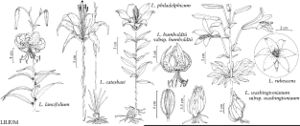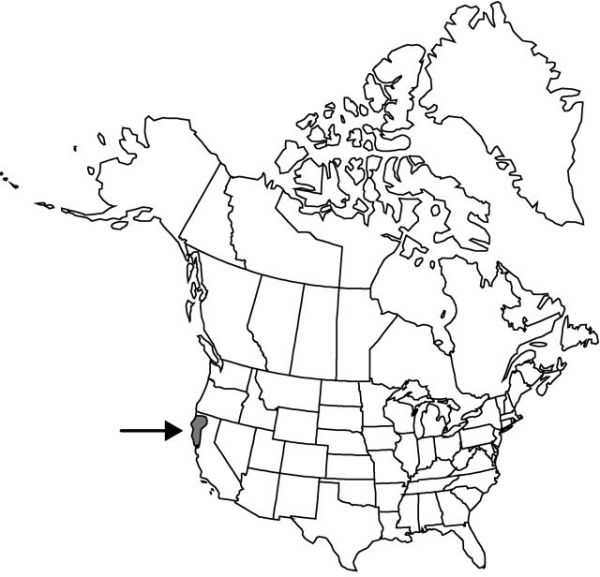Lilium rubescens
Proc. Amer. Acad. Arts 14: 256. 1879.
Bulbs ± ovoid, 3.9–9.4 × 2.5–7.1 cm, 1.1–2.6 times taller than long; scales unsegmented, longest 4–8.9 cm; stem roots absent. Stems to 2 m, often glaucous. Buds rounded in cross-section. Leaves in 3–5 (–more) whorls or partial whorls, 3–15 leaves per whorl, usually ± ascending, sometimes horizontal and drooping at tips, 3.2–12.3 × 1–2.8 cm, 2–6.4 times longer than wide; blade oblanceolate, sometimes obovate, rarely elliptic, margins usually undulate, apex acute, often widely so, or obtuse; veins and margins ± smooth abaxially. Inflorescences racemose, often with flowers in loosely defined whorls, 1–40-flowered. Flowers ascending to erect, fragrant; perianth funnelform; sepals and petals recurved 1/2–2/3 along length from base, white, aging pink-purple, with fine magenta spots concentrated proximally or less often generally distributed, often reddish or purplish abaxially, not distinctly clawed; sepals not ridged abaxially, 4.3–6.6 × 0.6–1.4 cm; petals noticeably wider than sepals, oblanceolate and often very wide proximally, 4.2–6.4 × 0.9–1.9 cm, apex widely acute, obtuse, or rounded; stamens included; filaments barely spreading, diverging 3°–12° from axis; anthers pale-yellow, 0.4–0.8 cm; pollen yellow; pistil 2.7–3.8 cm; ovary 1.2–1.8 cm; style pale green; pedicel 1.4–9.5 cm. Capsules usually with 6 longitudinal ridges, 2–3.7 × 1.7–2.7 cm, 1.1–1.7 times longer than wide. Seeds 67–189.2n = 24.
Phenology: Flowering summer (late May–early Aug).
Habitat: Dry soils in chaparral, gaps in redwood [Sequoia sempervirens (D. Don) Endlicher] or mixed evergreen forests
Elevation: 0–1500 m
Discussion
Lilium rubescens occurs from Santa Cruz County north through the Coast Ranges to Del Norte County, and is declining in the southern part of its range due to urbanization and over-collecting.
This is the only species in the genus in which the chromosome complement is known to consist of one pair of long metacentric chromosomes and eleven pairs of acrocentric chromosomes; all others possess two long metacentric pairs and ten shorter acrocentric pairs (M. W. Skinner 1988).
Various bee species visit the flowers during the day to collect nectar and pollen and may be the most significant pollinators. Pale swallowtails (Papilio eurymedon Lucas, family Papilionidae) also visit this lily.
The Karok used Lilium rubescens decoratively in bouquets (D. E. Moerman 1986).
Selected References
None.
Lower Taxa
"broad" is not a number."wide" is not a number."thicker" is not a number."elongating" is not a number.

